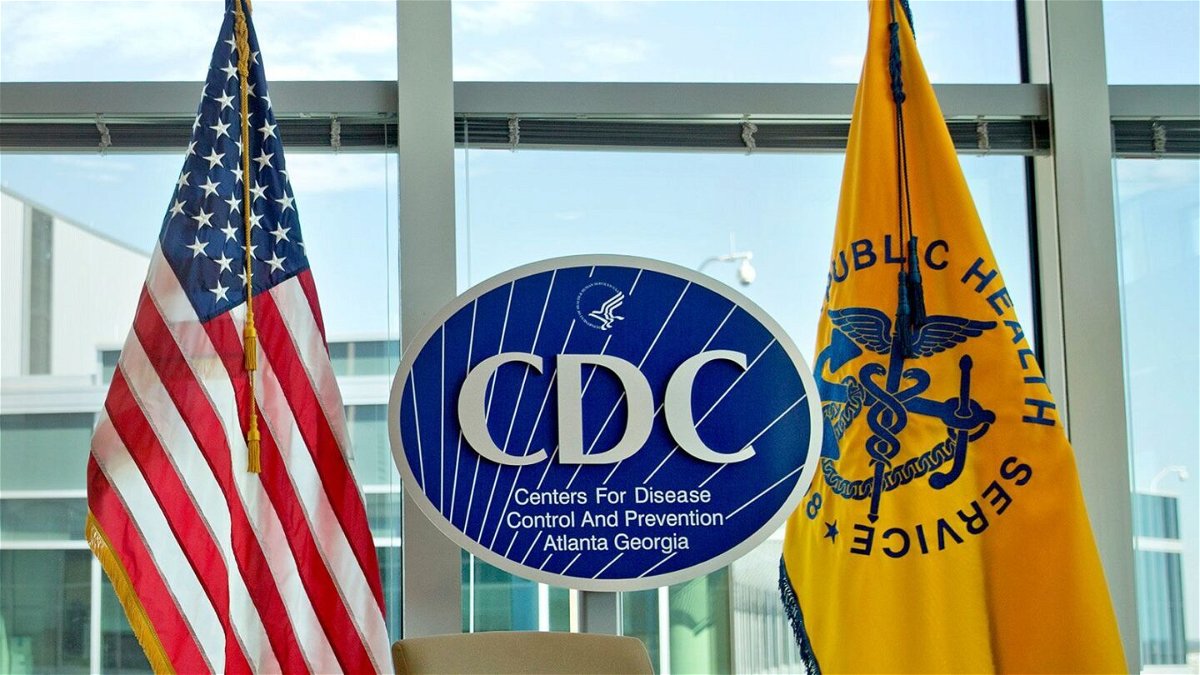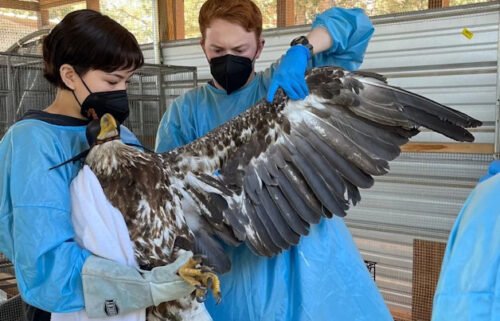CDC facing major funding cuts, with direct impact on state and local health departments

The US Centers for Disease Control and Prevention is poised to lose about $1.3 billion in funds.
By Deidre McPhillips and Brenda Goodman, CNN
(CNN) — Last month, a local health department in Texas received notification that a pregnant woman living in the area had tested positive for syphilis and had fallen behind on her ob/gyn care. It was a troubling situation, one that has become increasingly common as sexually transmitted infection cases surge both locally and nationally.
Within days, a disease intervention specialist — a core public health employee who helps with contact tracing, screening, health education and linking people to treatment — got to work on the case. They were able to find the woman, reconnect her to prenatal care services and start treatment for syphilis, keeping her healthy and preventing severe outcomes for the fetus.
“These are the people who have time and motivation to knock on doors and get the members of our community the care they need,” the director of the health department told CNN. “It’s hard to quantify that value. That’s key public health: stuff that’s not funded by doctor’s offices, insurance or other programs.”
But the US Centers for Disease Control and Prevention is poised to lose about $1.3 billion in funds as a result of last month’s federal debt ceiling negotiation that were initially allocated through Covid-19 supplemental funding, the agency shared with CNN. An earlier estimate from the Congressional Budget Office estimated the impact on CDC to be closer to $1.5 billion, but there is ongoing analysis about exactly which dollars could be rescinded.
The grant that funded those disease intervention specialists across the country was one of the first things to be rescinded. The last two years of the five-year grant were slashed across the board, a more than $400 million blow.
Because it expected five years of funding, the Texas health department had just hired four new disease intervention specialists — the first it was able to hire in decades.
“Those contracts were already signed. I thought any impacts [of the Fiscal Responsibility Act] would be on future budgets,” said the health department director, who asked not to be identified because all their staffers haven’t been told about the cuts. “It takes a long time to train a DIS. They had just started to be effective after working through the backlog of cases in our area. I’m devastated at the thought of losing them.”
Also on the chopping block due to the debt negotiations is a federal grant directed to states to help modernize their vaccine reporting systems, a clawback of about $233 million.
The full scope of the fallout beyond that is not clear. Federal agencies are still working through the exact accounting of the debt deal, and final dollar amounts won’t be available for months. The money at stake is supplemental funding that is not part of the annual budget process.
As the public health workforce across the country awaits updates, the mood is bleak.
“We’re falling even faster than I ever thought we would into the boom and bust cycle of funding public health,” said Janet Hamilton, executive director of the Council of State and Territorial Epidemiologists. “It is exceedingly troubling that we have a lot less than we thought we were going to have at a time when we need it most.”
And the cuts to STI and vaccination programs are already devastating, officials say.
“Those two areas are really the bread and butter of public health at the local level, two really big ones among many other priorities,” said Lori Tremmel Freeman, chief executive officer for the National Association of County and City Health Officials.
They come on top of years of “anemic” budgets, as one state public health department put it, and particularly tough setbacks during the Covid-19 pandemic.
“These funds were really being used to patch holes in the bucket, and we’ve just taken those patches out or made bigger holes,” Hamilton said.
Routine vaccination rates for incoming kindergarteners have fallen for two straight years, dropping from 95% in the 2019-20 school year to 93% in 2021-22, according to CDC data. That leaves an estimated 275,000 American children without full vaccine coverage, raising the risk of outbreaks of communicable diseases like measles.
And there were more than 2.5 million cases of STIs reported in the US in 2021, a rise of 7% in one year, according to CDC data. Cases of syphilis surged 32% in one year, including an alarming rise in infections passed from pregnant mothers to babies developing in the womb. In 2021, congenital syphilis caused 220 stillbirths and infant deaths.
“It’s like having the rug pulled out from under us,” said Elizabeth Finley, communications director for the National Coalition of STD Directors.
“We have the rising rates of congenital syphilis, one of the most concerning issues in the STI field right now. And we look at the loss of drugs, these biomedical tools, to get the job done,” she said, referring to a shortage of Bicillin, an antibiotic used in treatment.
“And then we look at losing the boots on the ground to do the work, and we really feel like our hands are tied as we see these rates rising.”
At the end of June, CDC officials sent a letter to grantees announcing the loss of funding for STI prevention programs.
“We are aware of how critical this funding has been for our nation’s programmatic response to infectious diseases, including sexually transmitted infections (STIs) and the effect the loss of these funds at this critical juncture will be to progress,” the letter said. “As a field accustomed to challenges, we know that our resilience will help us continue to advance the STI field.”
Over the past two decades, the national infrastructure to combat STIs has been “eroded,” with a 46% drop in per capita purchasing power, according to the letter.
With the latest funding cuts, Illinois will have to scrap positions for 94 disease intervention specialists, including 58 who were in local health departments. In Delaware, the grant funded three HIV prevention contractors, who help investigate outbreak clusters and support follow-up care, as well as a state laboratory manager. Utah, like many other states, also reported millions in lost funds – nearly all of which paid the salaries of public health workers.
“This is a devastating blow to the STI community, workforce, and general public. There is an expectation that with these funds being rescinded, STIs will continue to increase, potentially leading to unmanageable caseloads and disease burden,” the Utah state health department told CNN. “For Utahns, this means that funding will be cut for STI investigators who notify those who are unaware of an STI exposure, potentially saving them from long lasting effects.”
Another letter from the CDC announcing cuts to the immunization program came last month. State health departments and other grantees were expecting to hear more details this week. The funds are used for things like supporting staff who work to improve accuracy of immunization data reported by health care providers and maintaining and upgrading the systems.
In 2020, the CDC launched a multi-year, billion-dollar effort focused on data modernization, and better data sharing was a key component of a sweeping overhaul of the agency laid out last year by former Director Dr. Rochelle Walensky.
Some stakeholders remain hopeful that there are ways to rearrange funding or otherwise find dollars to maintain critical public health programs.
The director of the local Texas health department hasn’t yet shared the news of the cuts with the full department staff. The hope is that some combination of other grant money and state dollars can be cobbled together without having to let fewer – or any – staff go.
On Tuesday, a group of nearly 50 public health organizations sent a letter to CDC Director Dr. Mandy Cohen requesting that any unspent funds at the end of the fiscal year be redirected to restore a portion of the funding for disease intervention specialists.
“This workforce played a lifesaving role during COVID-19, helped affected communities respond quickly to last year’s mpox outbreak, and continue to combat the rising rates of congenital syphilis,” the letter reads. “Without the investment in the DIS workforce, the nation will be left unprepared to combat current infectious disease outbreaks and to address unknown outbreaks that could occur in the future.”
CDC has emphasized other sources of money that remain in place and fully funded, including the Public Health Infrastructure Grant, nearly $4 billion in grants that were awarded to help health departments support workforce development, data modernization and foundational capabilities.
“Covid-19 supplemental funding is not the only source of funding for state immunizations systems and workforce development,” Kathleen Conley, a CDC spokesperson, told CNN.
But many are frustrated that public health is seeing any cuts at all, especially at this scale.
“We already suffer from an inability to get money to flow in the right way to support our local health departments. So it feels like adding insult to injury at a time when we’re coming out of a pandemic, a historic public health event that killed more than a million people,” Freeman said. “Health departments are trying to rebuild, and that may now be hindered by some of these decisions.”
Collaboration is the foundation of public health, and funding cuts strain the heart of the operation, experts say.
“At this moment, we have sadly seen an erosion in the community’s trust of public health, and rebuilding that trust is more important than ever,” Hamilton said. “Public health often serves as a safety net, and the community needs to see and feel the services that it offers in order to trust it. It’s allowing people to see public health as a group that’s going to be there through thick and thin to help them, and you need funds to do that.”
The-CNN-Wire
™ & © 2023 Cable News Network, Inc., a Warner Bros. Discovery Company. All rights reserved.



